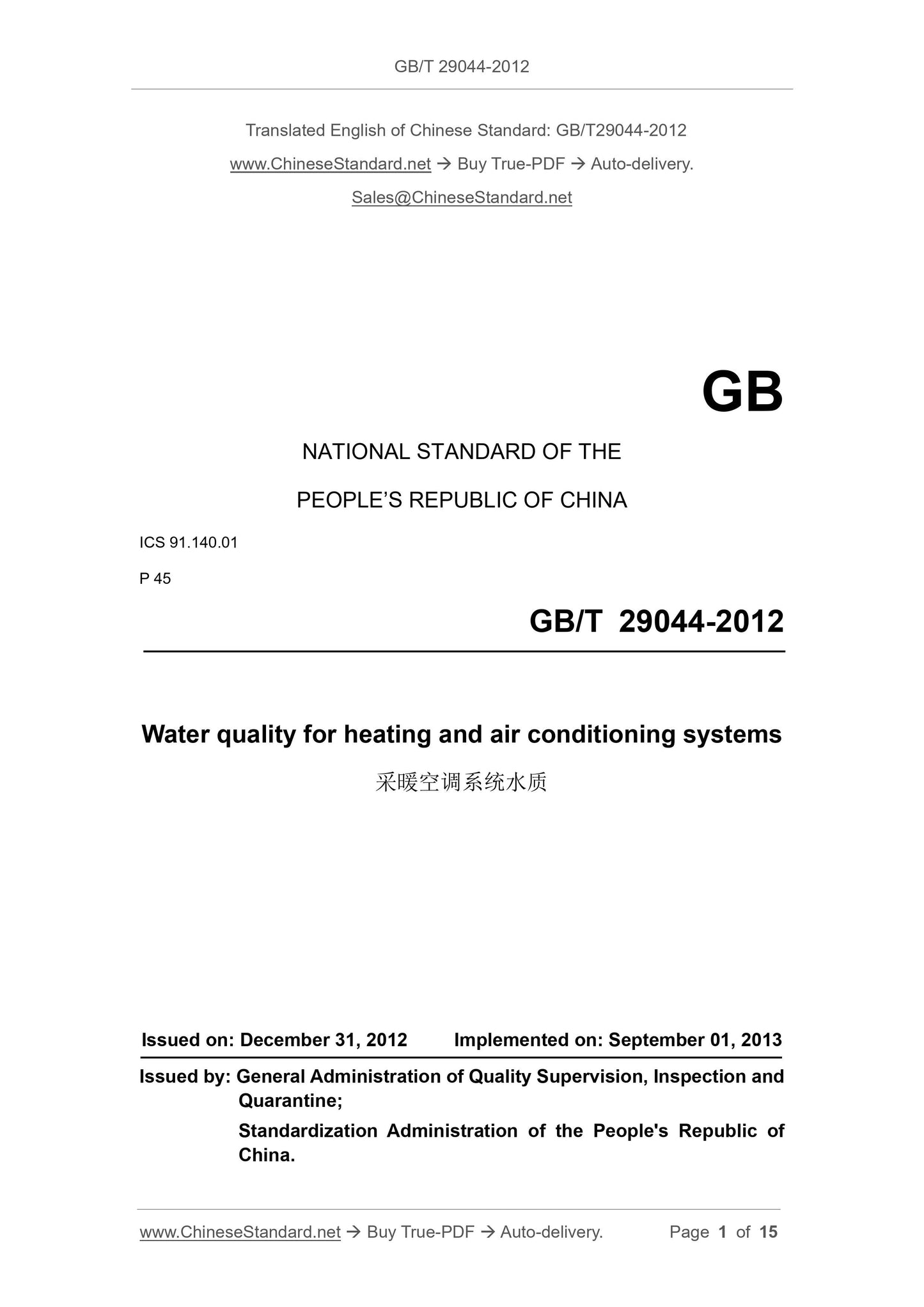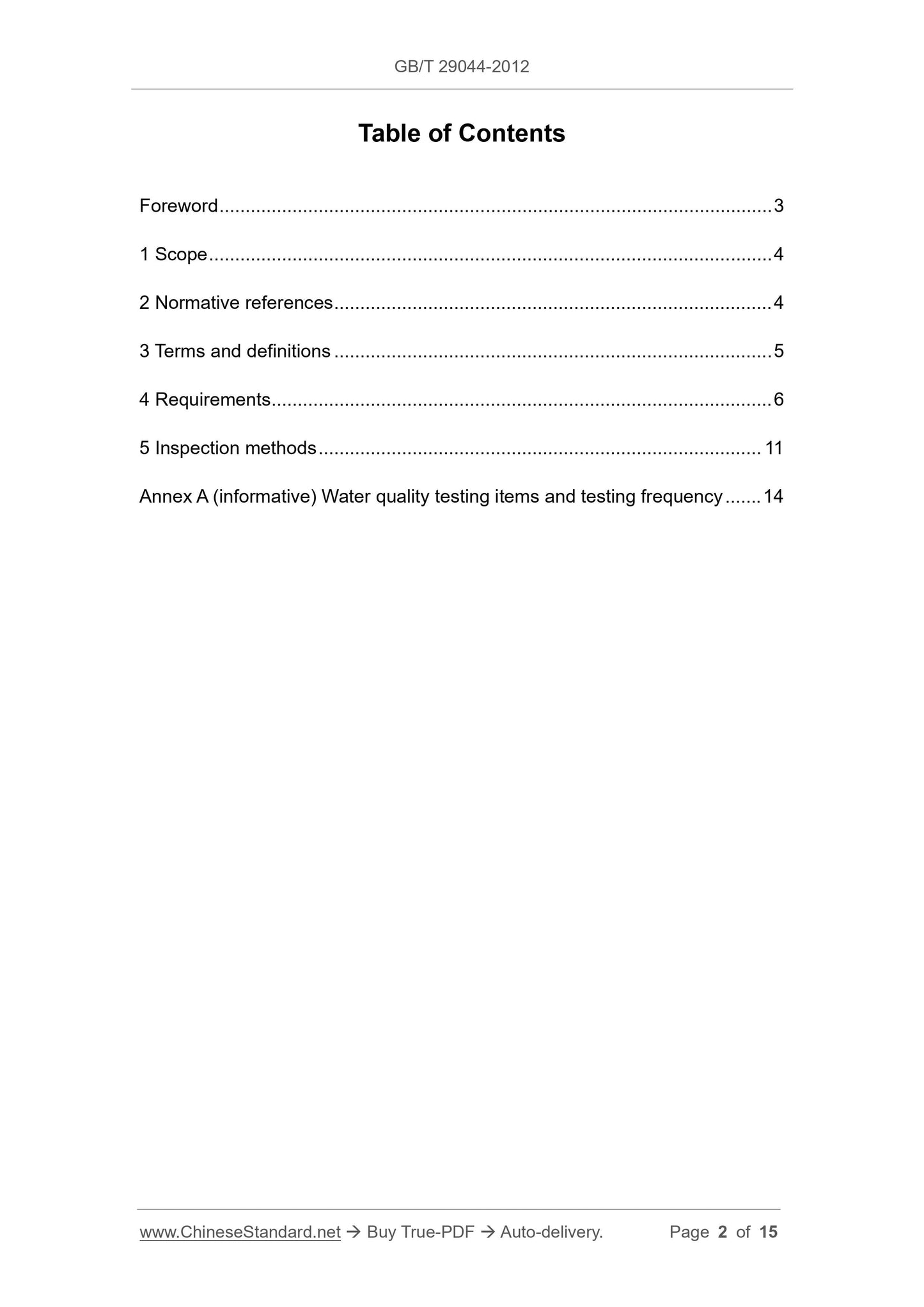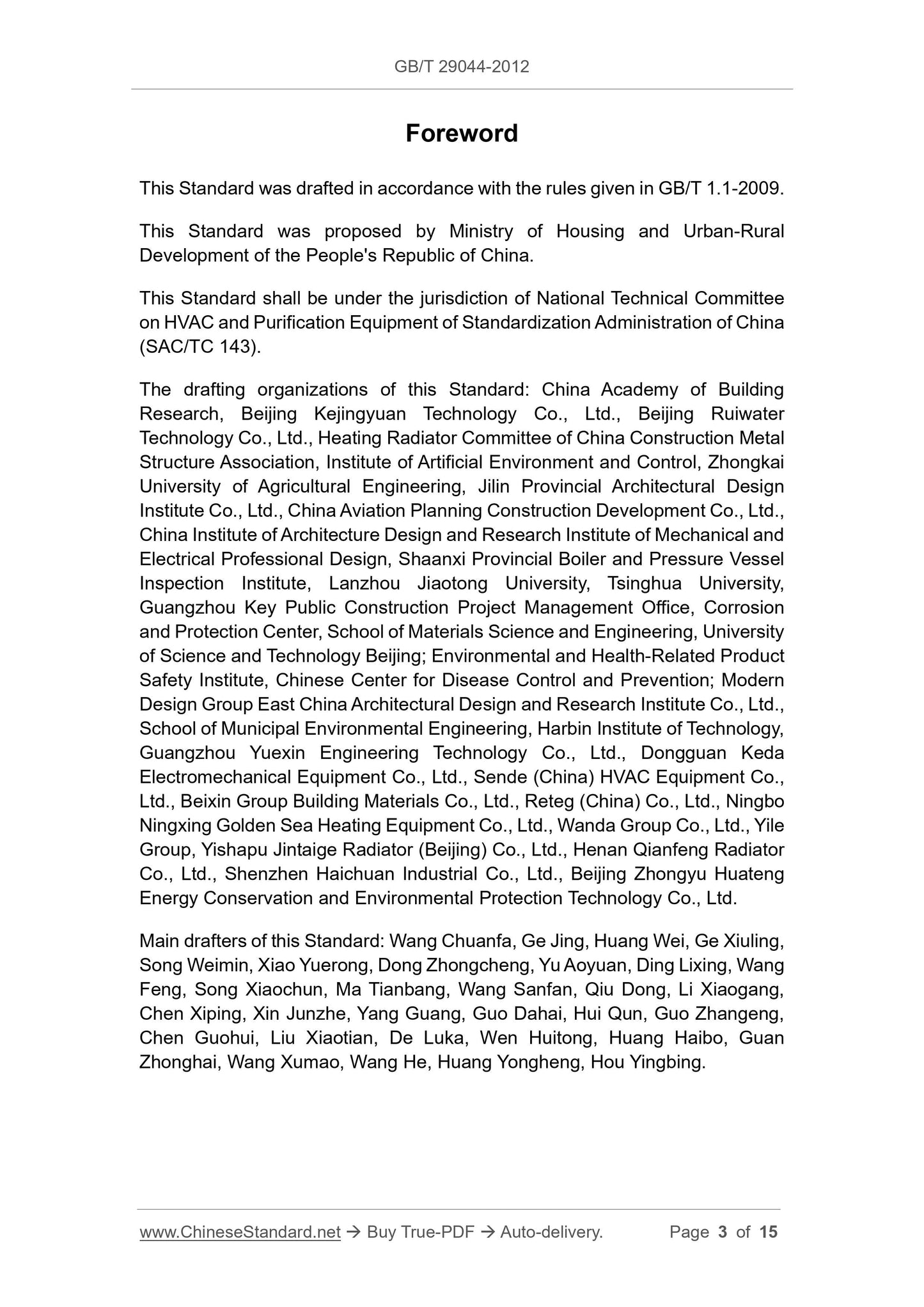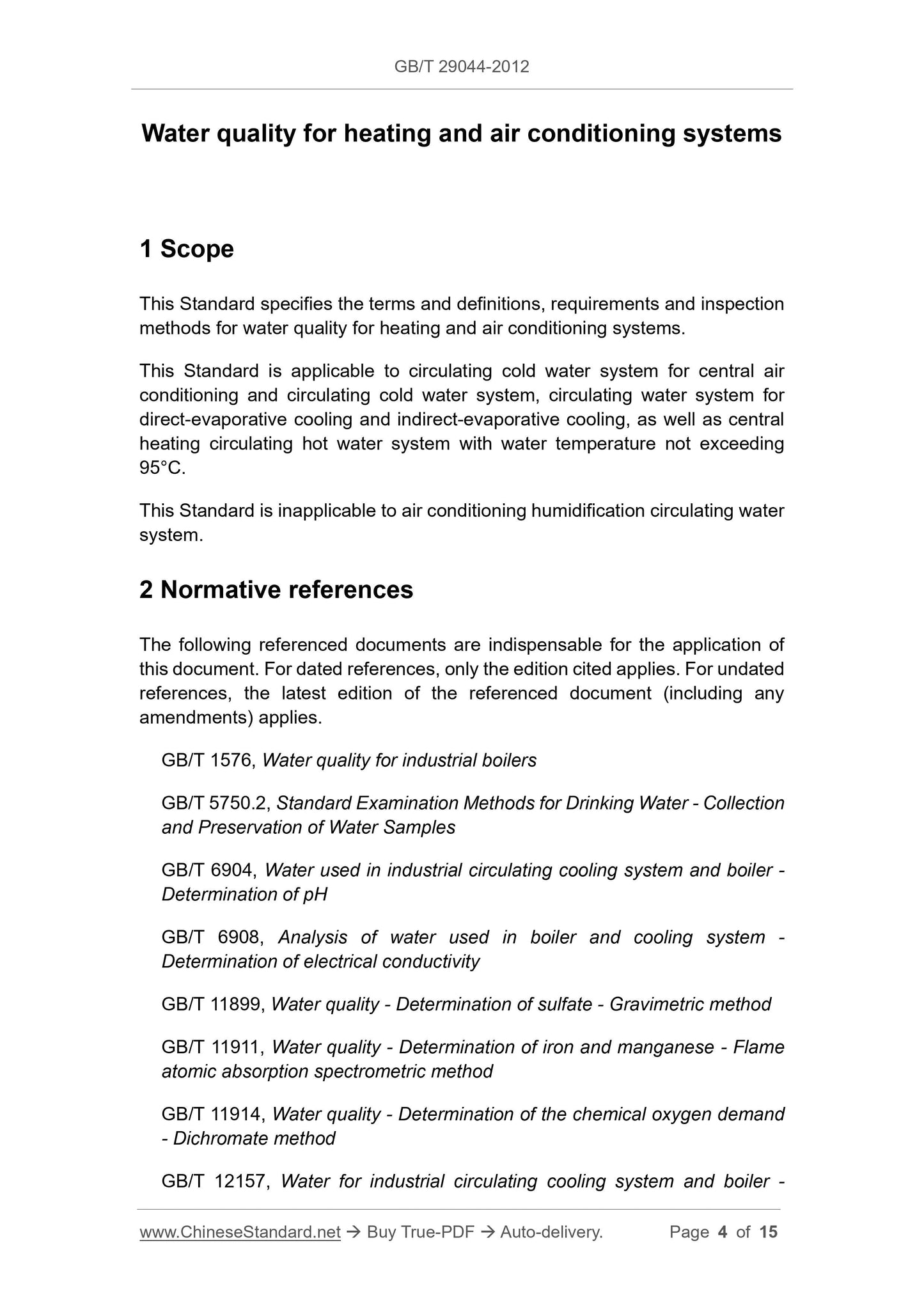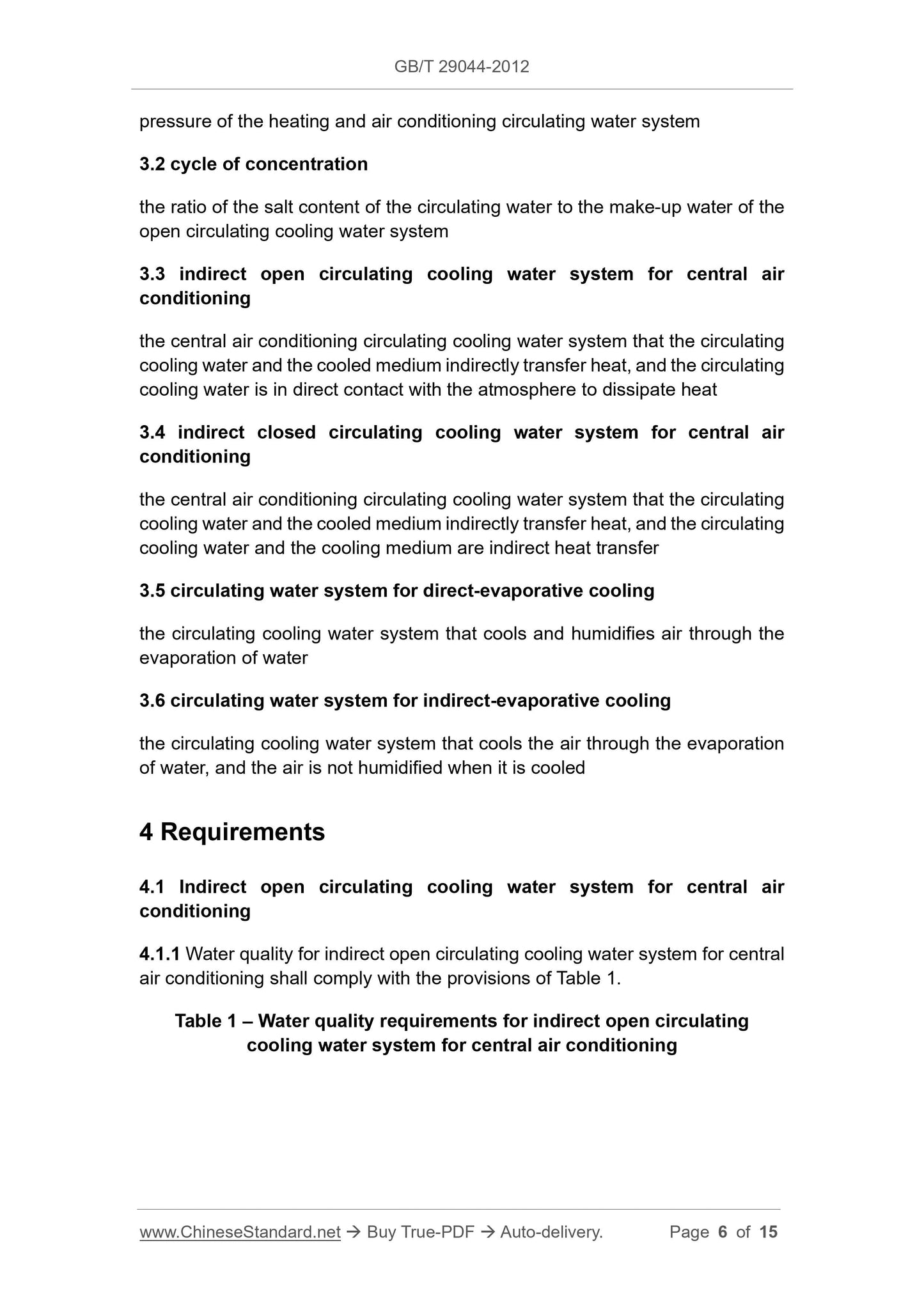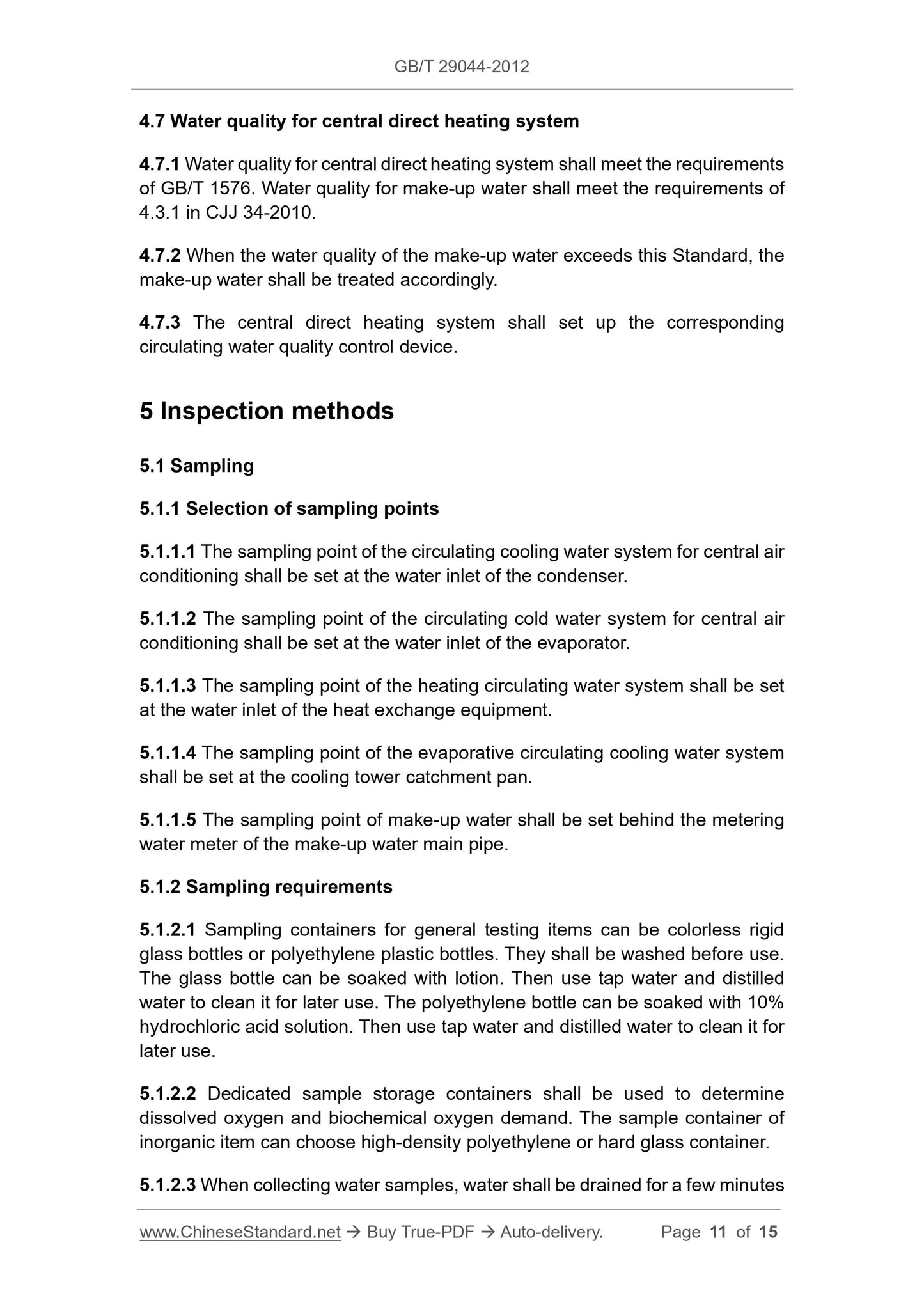1
/
of
6
www.ChineseStandard.us -- Field Test Asia Pte. Ltd.
GB/T 29044-2012 English PDF (GB/T29044-2012)
GB/T 29044-2012 English PDF (GB/T29044-2012)
Regular price
$245.00
Regular price
Sale price
$245.00
Unit price
/
per
Shipping calculated at checkout.
Couldn't load pickup availability
GB/T 29044-2012: Water quality for heating and air conditioning systems
Delivery: 9 seconds. Download (and Email) true-PDF + Invoice.Get Quotation: Click GB/T 29044-2012 (Self-service in 1-minute)
Newer / historical versions: GB/T 29044-2012
Preview True-PDF
Scope
This Standard specifies the terms and definitions, requirements and inspectionmethods for water quality for heating and air conditioning systems.
This Standard is applicable to circulating cold water system for central air
conditioning and circulating cold water system, circulating water system for
direct-evaporative cooling and indirect-evaporative cooling, as well as central
heating circulating hot water system with water temperature not exceeding
95°C.
This Standard is inapplicable to air conditioning humidification circulating water
system.
Basic Data
| Standard ID | GB/T 29044-2012 (GB/T29044-2012) |
| Description (Translated English) | Water quality for heating and air conditioning systems |
| Sector / Industry | National Standard (Recommended) |
| Classification of Chinese Standard | P45 |
| Classification of International Standard | 91.140.01 |
| Word Count Estimation | 13,191 |
| Quoted Standard | GB/T 1576; GB/T 5750.2; GB/T 6904; GB/T 6908; GB/T 11899; GB/T 11911; GB/T 11914; GB/T 12157; GB/T 13192; GB/T 13689; GB/T 14427; GB/T 14643.1; GB/T 15451; GB/T 15453; GB/T 15454; GB/T 15893.1; CJ 343; CJJ 34-2010; HJ 536; HJ 585; HJ 586 |
| Regulation (derived from) | National Standards Bulletin No. 41 of 2012 |
| Issuing agency(ies) | General Administration of Quality Supervision, Inspection and Quarantine of the People's Republic of China, Standardization Administration of the People's Republic of China |
| Summary | This standard specifies the quality heating and air conditioning systems terminology and definitions, requirements and test methods. This standard applies to central air conditioning cooling water and circulating water system, direct evaporation and indir |
Share
